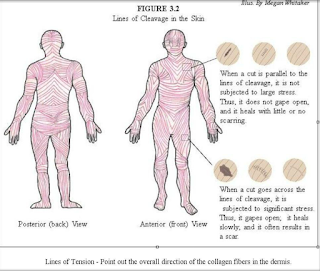Head Injury
Originally posted 12/2017
Head Injury Patients
Considerations
·
Signs and symptoms include headaches, nausea,
vision changes, ALOC, seizures
·
Be prepared for vomiting, either tilt the long
board, turn a head and prepare with suction to support the airway
·
Be sure to check for nasal or facial injuries
before using NPA’s and OPA’s – secure the airway
·
Assess for hemiparesis
·
Note pupil size, shape and equality or
inequality, reactivity or lack of reactivity, if abnormally dilated or
constricted and any nystagmus in addition to accommodation
·
Frequent neurological exams
o
Pupils
o
Level of consciousness
o
GCS
o
CMS
o
Orientation
o
short term memory – e.g. three words to have the
patient memorize (bear, house, book, etc.)
o
cognitive function – simple math problems
o
Fluid from nose and ears
§
Cerebrospinal fluid can be tested using
blotter/halo test where blood and CSF separate – produces as many false
positives as using glucometer to compare fluid vs capillary reading where ½ BS
in fluid than capillary blood
·
IV access with goal of maintaining normotensive
blood pressure do not allow pressure to be hypotensive but also do not create
hypertension with therapy.
·
Hypoxia is very bad but do not over oxygenate or
over ventilate. Too much oxygen or too much carbon dioxide will increase ICP
·
Use capnography - target Co2 levels at 25
(low-normal)
·
Positioning: Keep neck straight, head of bed
30-45 degrees
·
Considerations for rapid sequence intubation:
o
The paralytic Succinylcholine has been shown to be
associated with increases in intracranial pressure when not used with another agent
prior. Per Le, premedication typically occurred three minutes prior to
Succinylcholine use and may include Rocuronium and atropine (2013).
§
Atropine has added benefit of decreased
bradycardia especially when intubating pediatric patients
§
Rocuronium has the benefit of decreasing risk of
hyperkalemia from Succinylcholine use in trauma patients
o
The induction agent ketamine is contraindicated
in ICP, alternatives in the case of ICP include etomidate and Versed where
fentanyl may be given prior to decrease catecholamine release during laryngoscopy
·
Watch for increasing intercranial pressures
o
Cushing’s Triad ß
sign of brainstem dysfunction
§
Widening pulse pressures with systolic
hypertension
§
Irregular breathing (Cheyne Stokes)
§
Bradycardia
Le,
A. (2013). A discussion of the effects of succinylcholine on intracranial pressure
in patients with acute brain injury requiring rapid sequence intubation with or
without pretreatment with a neuromuscular blocking agent. Retrieved from http://jacobiem.org/a-discussion-of-the-effects-of-succinylcholine-on-intracranial-pressure-in-patients-with-acute-brain-injury-requiring-rapid-sequence-intubation-with-or-without-pretreatment-with-a-neuromuscular-blocki/


